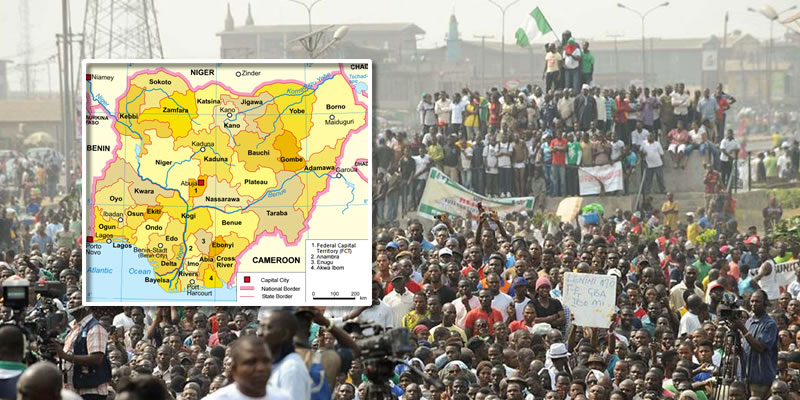In Nigeria, a state (Hausa: jiha, Igbo: ȯra, Yoruba: ìpínlẹ̀) is a federated political entity that shares sovereignty with the federal government. There are 36 states bound together by a federal agreement. The Federal Capital Territory is not a state and under the direct control of the federal government.
The states are further divided into a total of 774 Local Government Areas. Under the Nigerian Constitution, states have the power to ratify constitutional amendments.
1960-1963
At the time of independence in 1960, Nigeria was a Federal State of three Regions: Northern, Western, and Eastern. Additionally, provinces, which were a legacy of colonial and protectorate times, remained extant until they were abolished in 1976.
In fact, as at 1960 to 1966, there was no such thing as a state in the country. What we had then was the Northern region, Western region, Eastern region, and the Mid-Western region.
1963-1967
In 1963, two provinces were detached from the Western Region to form the new Mid-Western Region. The creation of states would begin in the year 1967 with General Yakubu Gowon coming to power via a coup d’état. He would dissolve the regions and create twelve states out of them.
1967-1976
In 1967, the regions were replaced by 12 states due to a military decree; only the former Mid-Western Region escaped division, and formed a single state following the restructuring. From 1967 to 1970 the Eastern Region attempted to secede, as a nation called Biafra during the Nigerian civil war.
1976-1987
In 1976, seven new states were created, making 19 altogether.
Gen. Murtala Mohammed would re-create seven states by carving from the existing twelve states that were created by Gen. Gowon.
This will result in the birthing of the Federal Capital Territory Abuja from Niger State as the North West states were divided into Niger and Sokoto.
In the same order, the Northern Eastern state was divided into Bauchi, Gongola, and Borno. Benue-Plateau was, however, carved into Plateau and Benue.
Also, the Western state was separated into three, which were Ondo, Ogun, and Oyo. The East Central states were separated to form Imo and Anambra states.
In February 1976, the newly created states would add up to the existing twelve; thus making nineteen states in Nigeria.
1987-1991
During this period, there were 21 states and later, Abuja, the Federal Capital Territory. Under the military rule of Gen. Ibrahim Babangida, two new states were created: Akwa Ibom and Kastina.
Akwa Ibom state was carved out of Cross River state, and Kastina state was carved out of Kaduna state.
1991-1996
During this period, there were 30 states and the Federal Capital Territory. The Federal Capital Territory was established in 1991. In 1987 two new states were established, followed by another nine in 1991, bringing the total to 30. The latest change, in 1996, resulted in the present number of 36 states.
On August 27, 1991, the number of Nigeria states would increase to thirty as Gen. Babangida thought it fit to create another nine state to the existing twenty-one.
Thus the creation of Adamawa state and Taraba state from Gongola. Enugu state was carved out from Anambra.
Edo state and Delta state were created from the then Bendel state. In addition, Yobe was carved out from Borno state, and Jigawa state from Kano.
Kebbi state would be carved from Sokoto, and Osun state was created from Oyo state.
In 1993 when Gen. Sani Abacha came into power, the agitations for States creation seemed to have doubled.
And with the recommendations of the National Constitutional Conference (NCC) on the need to create more States, the dreaded General created six more states, on 1st October 1996, to the existing thirty.
The newly created states include Ebonyi states, which was created from Abia and Enugu (part).
Bayelsa state was carved out from Rivers. Nasarawa state was created from Plateau. Zamfara state was created from Sokoto. Gombe state was carved out from Bauch, and Ekiti state was created from Ondo.
Hence the present thirty-six states we have in Nigeria
